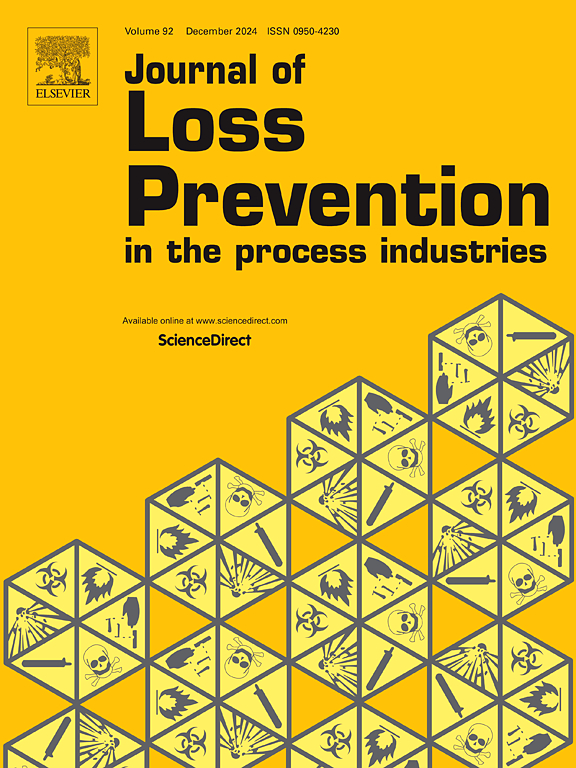Probability risk analysis of petrochemical storage tank areas considering the coupling effect of accident factors
IF 3.6
3区 工程技术
Q2 ENGINEERING, CHEMICAL
Journal of Loss Prevention in The Process Industries
Pub Date : 2025-05-07
DOI:10.1016/j.jlp.2025.105663
引用次数: 0
Abstract
The quantitative analysis of accident risk in petrochemical storage tank areas is one of the main bases of petrochemical storage tank safety management. The study collected 225 accident reports from petrochemical storage tank areas and performed statistical analysis on the risk data obtained from these reports. The Apriori algorithm is used to mine strong association rules between basic events in the risk data. These association rules are then input as conditional probabilities into the Bayesian Network (BN) model, with directed edges representing the coupling relationships between accident factors. Then, using the constructed BN model, the impact of coupling effects on the failure probabilities of various accident causes and the probabilities of different accident consequences is quantitatively analyzed. In the case of considering coupling effects, the posterior probabilities of certain key events increase significantly. For example, in the analysis of explosion accident influencing factors, the posterior probability changes of "Improper operation" (Hu01) and " Enterprise safety production main responsibility is not implemented" (Mg07) increased significantly from 0.09 to 0.07 to 0.12 and 0.11, respectively. These changes emphasize the importance of considering coupling effects in petrochemical accident risk analysis. Without considering coupling effects, certain potential hazard factors are overlooked, leading to severe accident consequences. Therefore, considering the coupling effects between accident factors during risk assessment helps to analyze accident causes more accurately, enabling targeted preventive measures, such as strengthening operator training, regular equipment maintenance, and improving safety management systems, to reduce accident probability and mitigate consequences.
考虑事故因素耦合效应的石化储罐区域概率风险分析
石油化工储罐区域事故风险的定量分析是石油化工储罐安全管理的主要依据之一。本研究收集了225份石油化工储罐区域的事故报告,并对这些报告中的风险数据进行了统计分析。利用Apriori算法挖掘风险数据中基本事件之间的强关联规则。然后将这些关联规则作为条件概率输入到贝叶斯网络(BN)模型中,有向边表示事故因素之间的耦合关系。然后,利用所构建的BN模型,定量分析了耦合效应对各种事故原因失效概率和不同事故后果概率的影响。在考虑耦合效应的情况下,某些关键事件的后验概率显著增加。例如,在爆炸事故影响因素分析中,“操作不当”(Hu01)和“企业安全生产主体责任未落实”(Mg07)的后验概率变化分别从0.09 - 0.07显著增加到0.12和0.11。这些变化强调了在石油化工事故风险分析中考虑耦合效应的重要性。在不考虑耦合效应的情况下,忽略了某些潜在的危害因素,导致严重的事故后果。因此,在风险评估中考虑事故因素之间的耦合效应,有助于更准确地分析事故原因,从而有针对性地采取预防措施,如加强操作人员培训、定期维护设备、完善安全管理制度等,降低事故发生概率,减轻事故后果。
本文章由计算机程序翻译,如有差异,请以英文原文为准。
求助全文
约1分钟内获得全文
求助全文
来源期刊
CiteScore
7.20
自引率
14.30%
发文量
226
审稿时长
52 days
期刊介绍:
The broad scope of the journal is process safety. Process safety is defined as the prevention and mitigation of process-related injuries and damage arising from process incidents involving fire, explosion and toxic release. Such undesired events occur in the process industries during the use, storage, manufacture, handling, and transportation of highly hazardous chemicals.

 求助内容:
求助内容: 应助结果提醒方式:
应助结果提醒方式:


